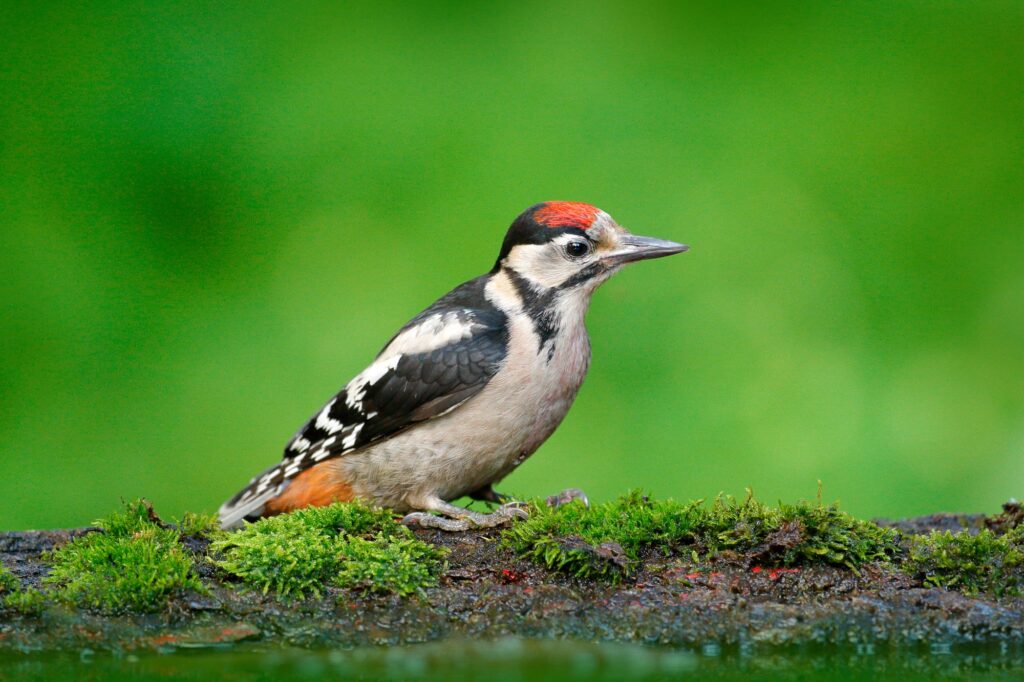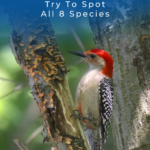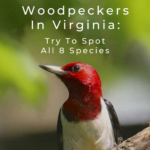History lovers know that Virginia is the birthplace of a nation because it’s the first permanent English settlement site. It’s also the Mother of Presidents because eight Virginia-born gentlemen managed to hold the honorable office of the American president, including four of the first five presidents.
But what you may not know is that there are 400 species of birds that live in Virginia and can easily be spotted in one of the state’s 39 state parks. There are currently eight species of woodpeckers that call Old Dominion home, and in this article, you’ll learn all about them.
Northern Flicker
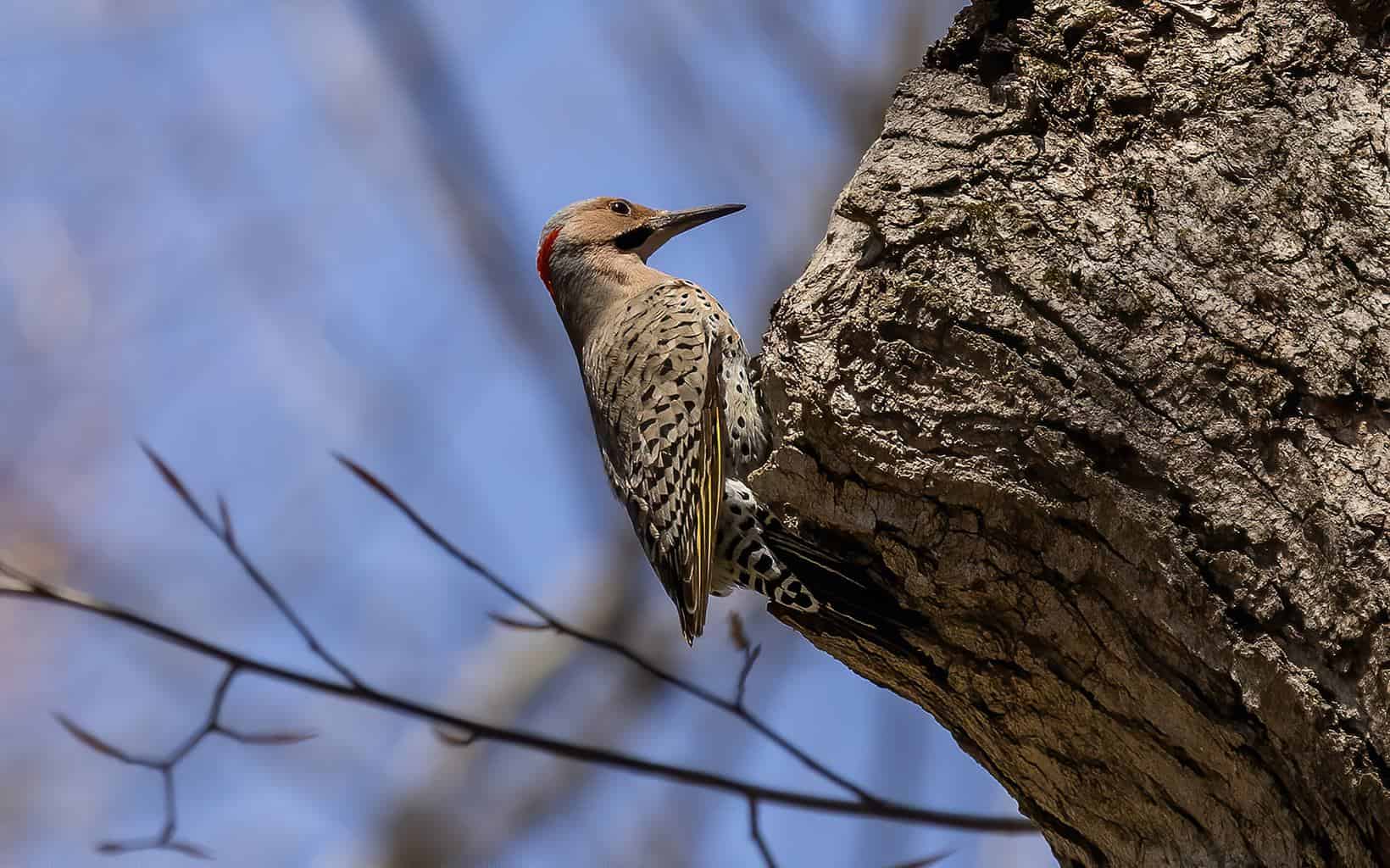
- Scientific Name: Colaptes auratus
- Length: 11-14 inches
- Weight: 3-5.9 ounces
- Wingspan: 17-21 inches
The yellow-shafted northern flicker, or common flicker, is easy to spot in Virginia, especially around residential areas and in state parks. The name refers to the yellow feathers that are located on the underside of the wings and tail.
Northern flickers have pale silvery brown bodies, and their diets affect the color of the underside feathers. Woodpeckers found in the western states usually have red feathers on the underside of their wings and tail while those in the east sport yellow-tinted feathers.
The northern flicker prefers to feed on horizontal logs and land, unlike other types of woodpeckers. It has a barbed tongue that digs into ant colonies to catch the larvae, so it’s quite easy to identify among other types of woodpeckers that would normally be foraging on tree trunks.
The northern flicker feeds on grains, nuts, seeds and likes to drum on trees and man-made objects to mark its territory or communicate with other woodpeckers.
Red-Cockaded Woodpecker
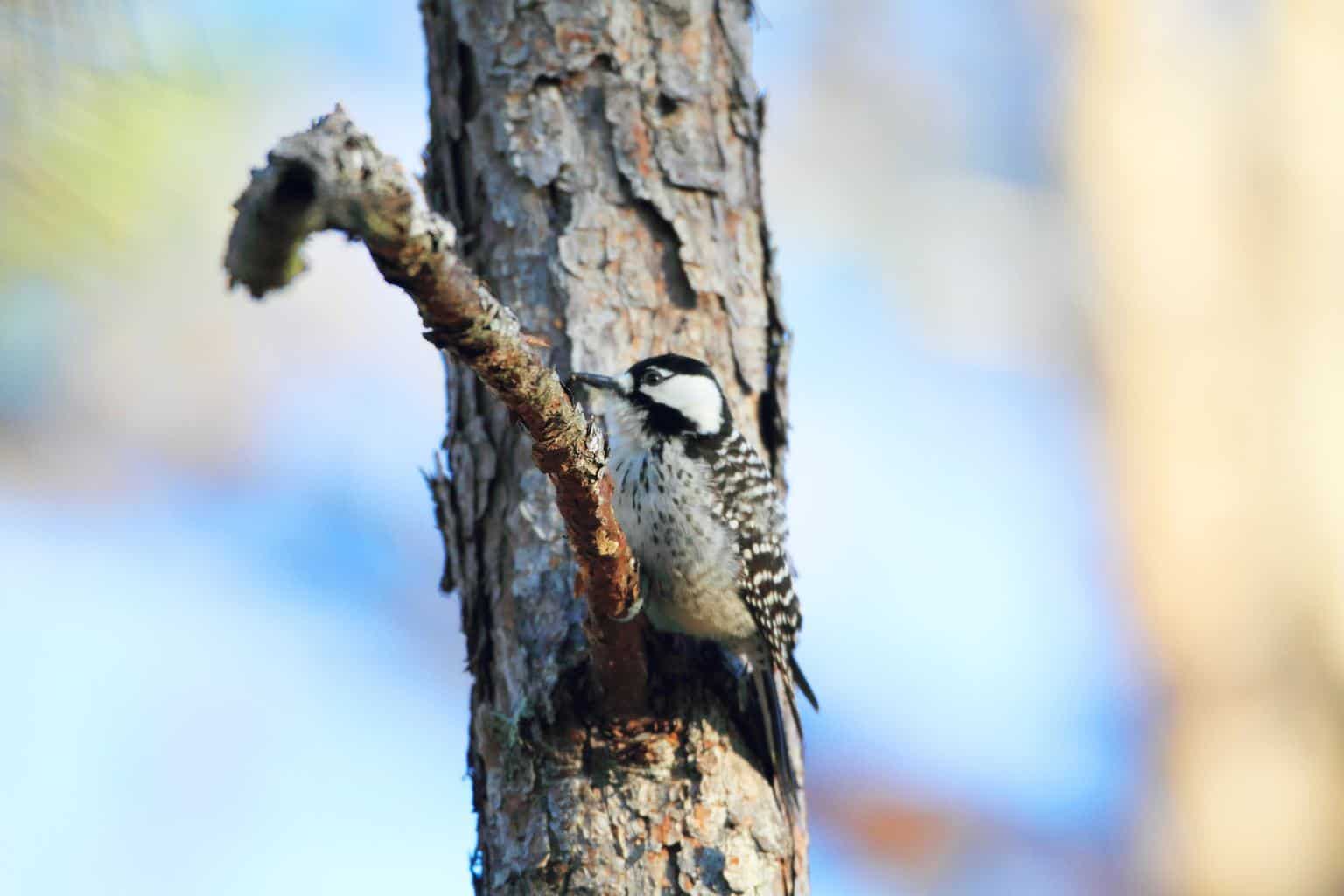
- Scientific Name: Dryobates borealis
- Length: 7.1-9.1 inches
- Weight: 1.4-2 ounces
- Wingspan: 13-16 inches
Though not extinct, this woodpecker is currently listed as near threatened due to logging that led to the loss of its habitat. As a result, it’s quite rare to find in Virginia.
The red-cockaded woodpecker has black and white stripes and black feathers around the face. The males grow red feathers on the sides of the cap during the mating season.
Wildfires due to lightning storms create the most suitable habitat for this bird, and it likes to feed on larvae, centipedes, termites, roaches, and bark beetles. It prefers live pine trees that were infected with heart rot.
Male birds are the ones that usually stick with the family and take care of the young birds while the females usually fly away.
Hairy Woodpecker

- Scientific Name: Leuconotopicus villosus
- Length: 7-10.2 inches
- Weight: 1.4-3.4 ounces
- Wingspan: 13-17 inches
This woodpecker looks like the downy woodpecker, but it’s slightly bigger and has a more erect posture. The hairy woodpecker is a close companion of the pileated woodpecker, usually following its steps to forage on the excavations it left behind.
The hairy woodpecker feeds on larvae, ants, bark beetles, and moth pupae. It’s also fond of feeding on the sap wells created by the yellow-bellied sapsucker.
It likes to excavate its nest in trees that were infected by heart rot and will always keep the entrance on the underside of the nest to protect it from predators. This bird likes to live in mature forests but is also found in parks, near residential areas, and in open woodlands.
If you have a dead tree in your backyard, you might occasionally see this bird foraging for larvae. It will also visit your backyard if you have a bird feeder filled with suet or seeds during winter.
Downy Woodpecker

- Scientific Name: Dryobates pubescens
- Length: 5.5-7.1 inches
- Weight: 0.71-1.16 ounces
- Wingspan: 9.8-12.2 inches
The downy woodpecker is quite easy to spot in Virginia. It looks a lot like the larger hairy woodpecker and will be a regular visitor in your backyard, especially if you have a bird feeder filled with suet.
This bird is one of the smallest woodpeckers that you can find in Virginia. It likes to fly up and down and balance on sycamore seed balls.
The downy woodpecker lives in gardens, clearings, and woodlands and is not as shy as other types of woodpeckers, so you’re likely to see it flying around or foraging for food.
This bird has a black body with a white belly, but the males grow a red patch on the back of the head. Birders can tell the difference between the hairy and downy woodpeckers by examining the body-to-bill ratio.
It feeds on larvae, ants, acorns, berries, grapes, and caterpillars and is an enthusiastic drummer during spring.
Pileated Woodpecker

- Scientific Name: Dryocopus pileatus
- Length: 16-19 inches
- Weight: 9-14 ounces
- Wingspan: 26-30 inches
If you’re a fan of cartoons, then you probably know that the pileated woodpecker is the real inspiration behind the creation of Woody Woodpecker. This is one of the largest woodpeckers and has a black striped back with a red triangular crest that makes it look a lot different from other woodpeckers you can spot in Virginia.
The pileated woodpecker is always drumming on dead trees, foraging for ants and wood-boring larvae that live in the bark. It also feeds on other bugs like caterpillars, spruce budworms, and grasshoppers.
It has a strong bill and digs wide holes to forage for food. These holes can be big enough to break smaller trees.
The excavated nests of the pileated woodpecker attract other birds like owls, ducks, and swifts. Other birds, like the hairy woodpecker, will come and forage for larvae in the excavations left by this bird.
It’s not quite common to see in residential areas, but it might visit your backyard if you have a bird feeder filled with suet.
Red-Headed Woodpecker
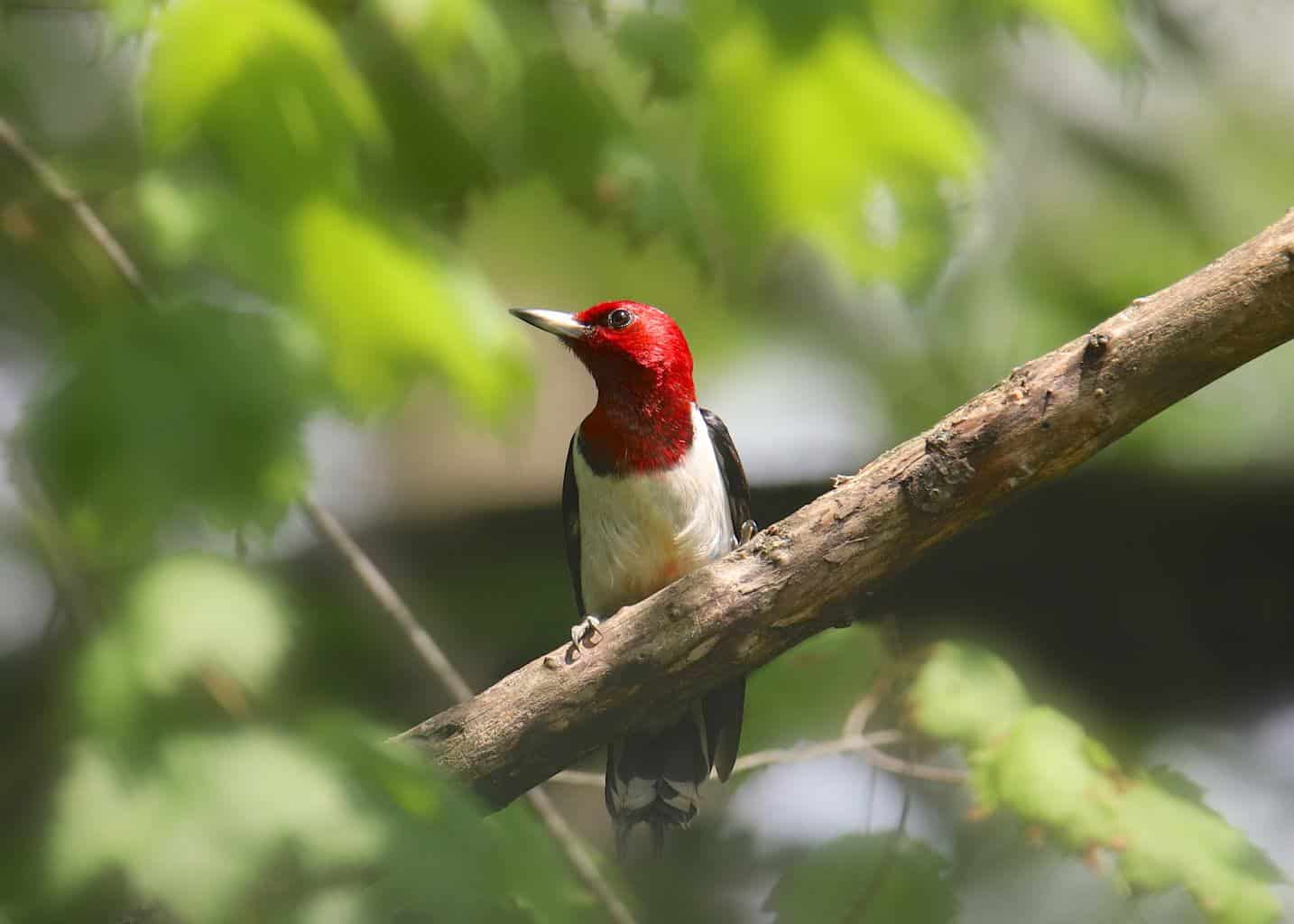
- Scientific Name: Melanerpes erythrocephalus
- Length: 7.5-9.8 inches
- Weight: 2-3.4 ounces
- Wingspan: about 16.7 inches
This bird has a black back with a white belly and a bright red head. Younger birds have gray heads that turn red when the birds reach maturity.
The red-headed woodpecker is found year-round in Virginia.
Despite the medium-size of the bird, it has a robust bill that allows it to penetrate through the bark to forage for larvae and other wood-boring larvae. Moreover, it catches insects while they’re flying, which is not especially common among woodpeckers.
In some cases, this bird will feed on grapes, berries, seeds, nuts, grains, younger birds, and small rodents. The number of red-headed woodpeckers has increased due to the continuous efforts of reserving the bird’s natural habitat.
This bird competes with other birds like the red-bellied woodpecker for nest cavities and can get quite aggressive while defending its territory. It occasionally pecks the eggs of other birds.
Red-Bellied Woodpecker

- Scientific Name: Melanerpes carolinus
- Length: 9-10.5 inches
- Weight: 2-3.2 ounces
- Wingspan: 15-18 inches
The red-bellied woodpecker has a barbed-like tongue that it uses to catch larvae from the deep crevices in trees. Male birds have red tops and backs, while female birds have red napes.
This woodpecker is easy to find in Virginia in woodlands, grooves, and forests, especially near water. It’s quite adaptable and has a diverse diet.
This bird feeds on acorns, nuts, grains, seeds, as well as other small birds and lizards. It usually stores food to eat later and might visit bird feeders in residential areas.
In the spring and summer, this woodpecker will call other woodpeckers with its loud rolling call. If you have a dead tree in your backyard, you might occasionally see this woodpecker foraging for larvae.
Yellow-Bellied Sapsucker
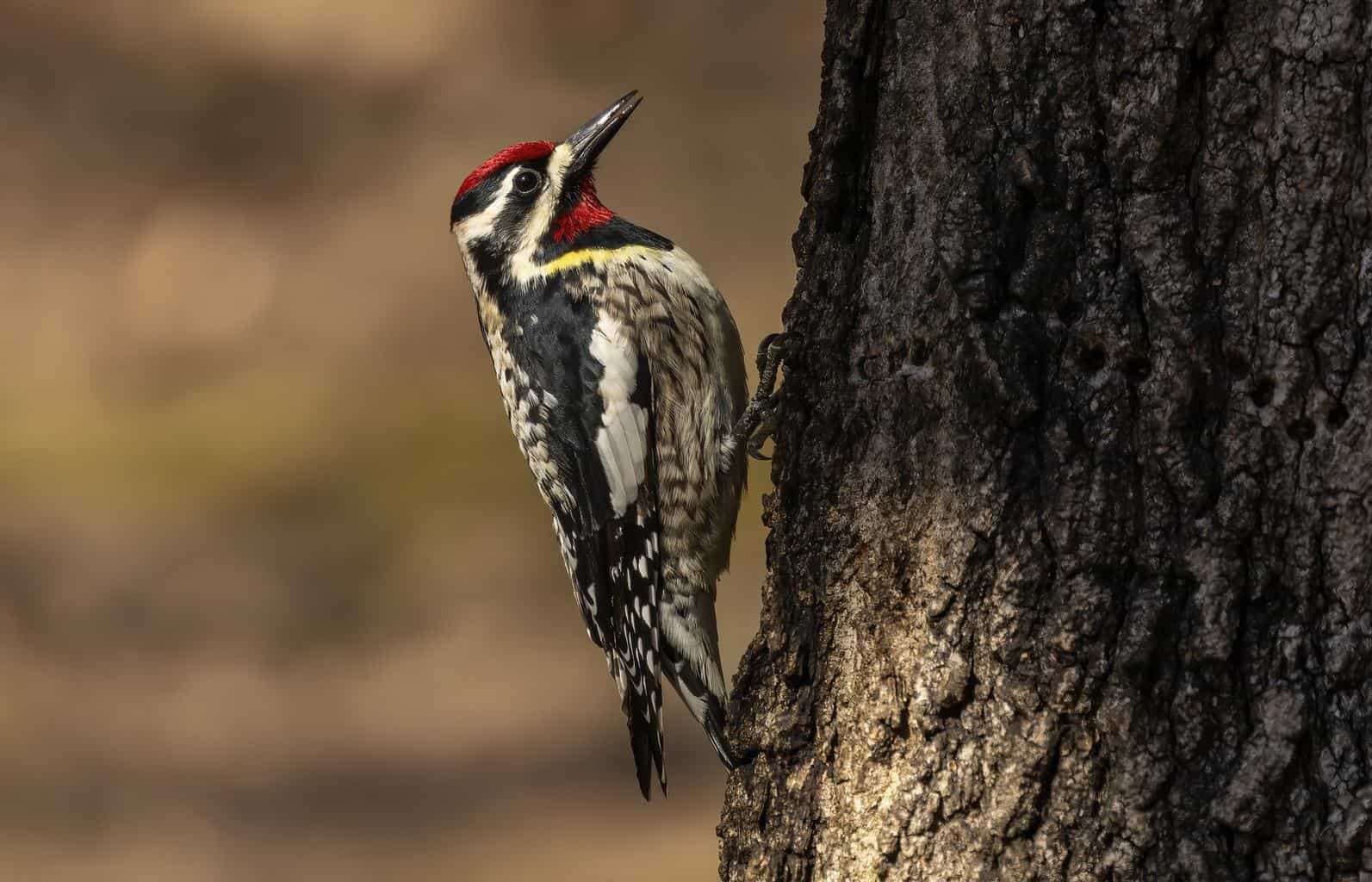
- Scientific Name: Sphyrapicus varius
- Length: 7.5-8.3 inches
- Weight: 1.2-2.2 ounces
- Wingspan: 13.4-15.8 inches
Males and females of the yellow-bellied sapsucker species have different foreheads. The forehead is red or yellow in males and is a lighter shade of red in females. The throat is red in males and white in females.
If you want to see this bird, you should follow the sap wells’ organized patterns that it usually leaves on trees. It likes to lick the sap with its tongue and feeds on larvae and insects living in these sap wells.
These sap wells attract several animals and birds. In most cases, the bird will dig these sap wells on top of each other. Hummingbirds usually follow the yellow-bellied sapsucker to feed on the sugary sap.
When food is scarce, this bird will visit your backyard and feed on suet found in your bird feeder.
Conclusion
It’s easy to spot woodpeckers in Virginia, as most of these birds aren’t that shy. Keep your eyes open and pay attention to their loud calls, and you will find them quickly.

